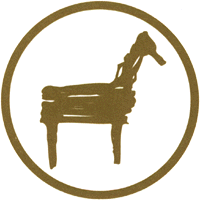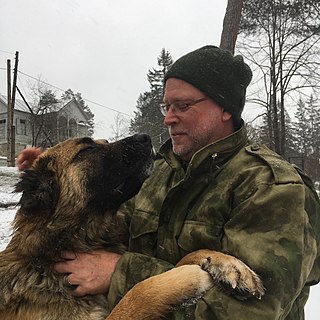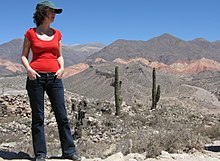
Traditional medicine comprises medical aspects of traditional knowledge that developed over generations within the folk beliefs of various societies, including indigenous peoples, before the era of modern medicine. The World Health Organization (WHO) defines traditional medicine as "the sum total of the knowledge, skills, and practices based on the theories, beliefs, and experiences indigenous to different cultures, whether explicable or not, used in the maintenance of health as well as in the prevention, diagnosis, improvement or treatment of physical and mental illness". Traditional medicine is often contrasted with scientific medicine.

Ethnobotany is the study of a region's plants and their practical uses through the traditional knowledge of a local culture and people. An ethnobotanist thus strives to document the local customs involving the practical uses of local flora for many aspects of life, such as plants as medicines, foods, intoxicants and clothing. Richard Evans Schultes, often referred to as the "father of ethnobotany", explained the discipline in this way:
Ethnobotany simply means investigating plants used by primitive societies in various parts of the world.

Pharmacognosy is the study of crude drugs obtained from medicinal plants, animals, fungi, and other natural sources. The American Society of Pharmacognosy defines pharmacognosy as "the study of the physical, chemical, biochemical, and biological properties of drugs, drug substances, or potential drugs or drug substances of natural origin as well as the search for new drugs from natural sources".

Ethnobiology is the scientific study of the way living things are treated or used by different human cultures. It studies the dynamic relationships between people, biota, and environments, from the distant past to the immediate present.
Ethnomedicine is a study or comparison of the traditional medicine based on bioactive compounds in plants and animals and practiced by various ethnic groups, especially those with little access to western medicines, e.g., indigenous peoples. The word ethnomedicine is sometimes used as a synonym for traditional medicine.

Ethnoveterinary medicine (EVM) considers that traditional practices of veterinary medicine are legitimate and seeks to validate them. Many non-Western traditions of veterinary medicine exist, such as acupuncture and herbal medicine in China, Tibetan veterinary medicine, Ayurveda in India, etc. These traditions have written records that go back thousands of years, for example the Jewish sources in the Old Testament and Talmud and the Sri Lankan 400-year-old palm-leaf frond records of veterinary treatments. Since colonial times scientists had always taken note of indigenous knowledge of animal health and diagnostic skills before implementing their Western-technology projects.

Paul Alan Cox is an American ethnobotanist whose scientific research focuses on discovering new medicines by studying patterns of wellness and illness among indigenous peoples. Cox was born in Salt Lake City in 1953.

The Kallawaya are an indigenous group living in the Andes of Bolivia. They live in the Bautista Saavedra Province and Muñecas Province of the La Paz Department but are best known for being an itinerant group of traditional healers that travel on foot to reach their patients. According to the UNESCO Safeguarding Project, the Kallawaya can be traced to the pre-Inca period as direct descendants of the Tiwanaku and Mollo cultures, meaning their existence has lasted approximately 1,000 years. They are known to have performed complex procedures like brain surgery alongside their continuous use of medicinal plants as early as 700 AD. Most famously, they are known to have helped to save thousands of lives during the construction of the Panama Canal, in which they used traditional plant remedies to treat the malaria epidemic. Some historical sources even cite the Kallawayas as the first to use quinine to prevent and control malaria. In 2012, there were 11,662 Kallawaya throughout Bolivia.
Nina Lilian Etkin was an anthropologist and biologist. Etkin was noted for her work in medical anthropology, ethnobiology, and ethnopharmacology. She studied the relation between food and health for over thirty years. Her work involved complementary and alternative medicines for prevention and treatment in Hawai‘i; the use of ethnomedicines in Indonesia; and health issues in Nigeria. She won numerous grants and awards from national and international agencies and published several books as well as over 80 professional articles in peer reviewed journals.

Traditional African medicine is a range of traditional medicine disciplines involving indigenous herbalism and African spirituality, typically including diviners, midwives, and herbalists. Practitioners of traditional African medicine claim, largely without evidence, to be able to cure a variety of diverse conditions including cancer, psychiatric disorders, high blood pressure, cholera, most venereal diseases, epilepsy, asthma, eczema, fever, anxiety, depression, benign prostatic hyperplasia, urinary tract infections, gout, and healing of wounds and burns and even Ebola.

Chandra Prakash Kala is an Indian ecologist and professor. His research interests include alpine ecology, conservation biology, indigenous knowledge systems, ethnobotany and medicinal aromatic plants. He is an assistant professor in the faculty area of Ecosystem and Environment Management at the Indian Institute of Forest Management.

Peru has a decentralized healthcare system that consists of a combination of governmental and non-governmental coverage. Five sectors administer healthcare in Peru today: the Ministry of Health, EsSalud, and the Armed Forces (FFAA), National Police (PNP), and the private sector.

Apo, apong, or poka is an alcohol drink commonly found among the tribes in the Northeast India states of Arunachal Pradesh and Assam. It is prepared by fermentation of rice. It is known by various names across different tribes in Arunachal Pradesh and Assam.
Pisti is a mountain in the Andes of Peru, about 5,100 metres (16,732 ft) high. It is located in the Apurímac Region, Antabamba Province, Sabaino District, and in the Aymaraes Province, on the border of the districts of Caraybamba and Chalhuanca. Pisti lies northwest of Kiswarani.
Pisti Q'asa is a 5,169-metre-high (16,959 ft) mountain in the Wansu mountain range in the Andes of Peru. It is located in the Arequipa Region, La Unión Province, Huaynacotas District. Pisti Q'asa lies southwest of Puka Urqu and northwest of P'umpu Q'asa.
Gary John Martin is an American anthropologist, ethnobotanist and conservationist, known for his 1995 book Ethnobotany: a methods manual, which has been translated into Bahasa Melayu, Mandarin and Spanish.
Ada'ar is a district, or woreda, of the Afar Region in Ethiopia.

Michael Jeffrey Balick is an American ethnobotanist, economic botanist, and pharmacognosist, known as a leading expert on medicinal and toxic plants, biocultural conservation and the plant family Arecaceae (palms).

Rainer W. Bussmann is a German botanist and vegetation ecologist, specializing in ethnobotany and ethnobiology, wild food plants, wild crop relatives, climate change, gastronomic botany and preservation of traditional knowledge in the Andes, the Caucasus and the Himalayas. He has worked at the University of Bayreuth, University of Hawaii, University of Texas, the Missouri Botanical Garden, Ilia State University and the State Museum of Natural History Karlsruhe; he has founded several international non-governmental organizations, including Nature and Culture International, Saving Knowledge, and Ethnomont.

Ben-Erik van Wyk FAAS is a South African professor of indigenous botany and traditional African medicine at the University of Johannesburg.














